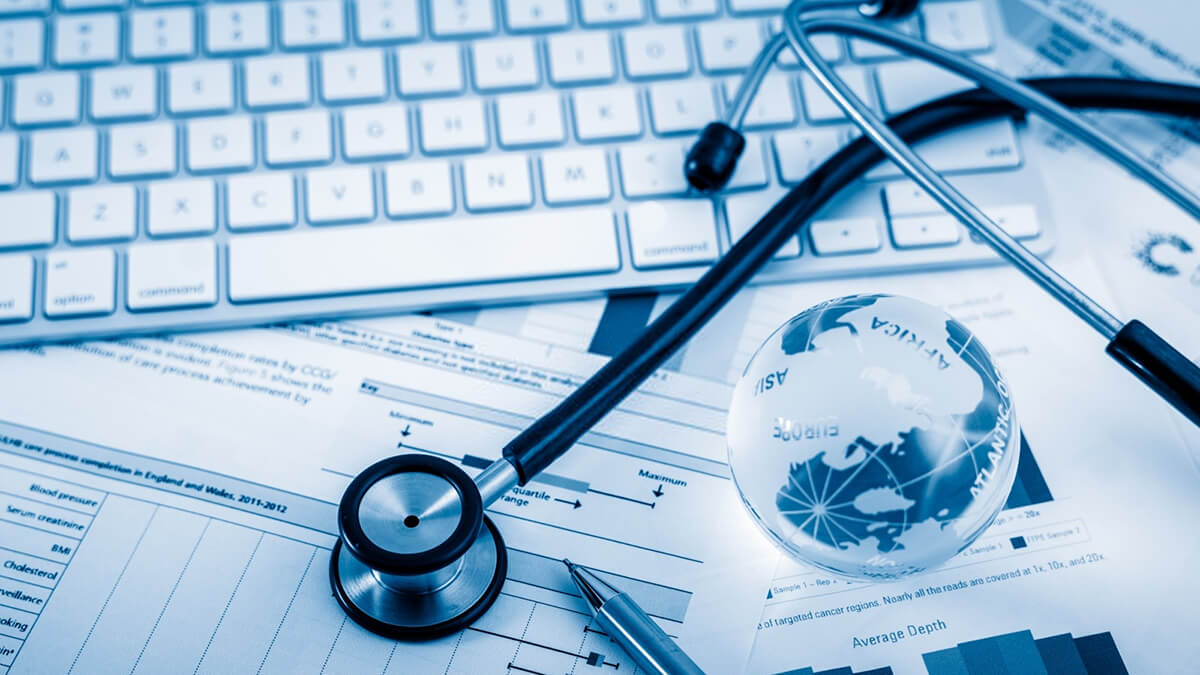Just how to Begin an Effective Job in Medical Administration: A Newbie's Guide
Just how to Begin an Effective Job in Medical Administration: A Newbie's Guide
Blog Article
Innovations in Medical Administration: How Innovation Is Reshaping Medical Care Administration
Electronic Wellness Records (EHR) have become the foundation of efficient client data monitoring, while telemedicine bridges ranges, making medical care available to even the most remote locations. As these innovations take facility stage, a crucial concern emerges: just how will these modern technologies even more redefine the health care experience for both companies and individuals in the coming years?
Evolution of Electronic Health Records
Over the past couple of decades, the advancement of digital wellness records (EHRs) has significantly transformed the landscape of clinical management. Made to digitize client records, EHRs have broadened beyond their initial scope to end up being indispensable tools in streamlining healthcare processes, boosting person care, and improving administrative efficiencies. The transition from paper-based systems to EHRs has actually lowered redundancies, lessened mistakes, and facilitated seamless info sharing across different doctor, thereby making it possible for comprehensive and worked with patient treatment.
EHRs have actually introduced a standard change in health care monitoring by incorporating clinical, administrative, and monetary information, therefore permitting more enlightened decision-making. The accessibility of real-time individual data empowers healthcare specialists to make prompt analysis and treatment decisions, even more improving patient outcomes. In addition, EHRs support the execution of evidence-based techniques by providing accessibility to the most recent clinical study and therapy standards straight within the scientific operations.
The federal incentives and policies have accelerated EHR adoption, making certain conformity with criteria that safeguard client personal privacy and data safety and security. As the healthcare market remains to accept digital makeover, EHRs remain at the leading edge of technology, driving effectiveness and enhancing the total top quality of medical care shipment.
Improvements in Telemedicine
Telemedicine has rapidly advanced over the last few years, fundamentally altering the means health care services are delivered. This change is greatly credited to technical technologies that have actually expanded accessibility to medical care, specifically for individuals in remote or underserved locations. Telemedicine platforms help with real-time assessments in between people and doctor, thereby reducing the need for in-person sees and significantly decreasing wait times.
The assimilation of video clip conferencing, mobile health and wellness applications, and remote tracking tools has actually enhanced the scope of telemedicine. Individuals can currently handle persistent problems with constant monitoring, obtain prompt examinations, and accessibility professional treatment without geographical constraints. This change has not only improved person satisfaction but has additionally optimized health care process and source appropriation.
In addition, telemedicine has played a crucial role in public wellness, particularly during pandemics, by lessening the risk of contagious illness transmission. Regulatory innovations have actually further sustained telemedicine's expansion, with many countries modifying policies to enable broader insurance policy coverage for online visits.
Regardless of obstacles such as electronic literacy and data protection, the recurring advancement of telemedicine promises to maintain its trajectory as a cornerstone of contemporary healthcare management, providing a more easily accessible and reliable health care shipment version.
Artificial Intelligence in Healthcare
Building on the technological developments seen in telemedicine, man-made intelligence (AI) is quickly coming to be a transformative force in medical care administration. One of the most engaging applications of AI in health care is anticipating analytics, which makes it possible for healthcare administrators to prepare for individual requirements, enhance resource allocation, and enhance client outcomes.

Another look what i found remarkable application is in customized medicine, where AI assists in tailoring therapies to private client accounts by evaluating genetic, way of life, and environmental variables (medical administration). As AI remains to develop, its assimilation right into healthcare administration assures to optimize procedures, reduce costs, and inevitably boost the high quality of treatment given
Enhancing Information Security Steps
As health care organizations progressively depend on electronic systems for managing patient data, the need for robust data safety and security actions has actually expanded tremendously. Data violations not only endanger individual privacy however likewise lead to considerable economic losses and damage to institutional reputations.
Medical care establishments are executing multi-layered safety and security frameworks to minimize threats. File encryption modern technologies make sure that sensitive information remains hard to reach to unauthorized customers, both during transmission and storage. The fostering of blockchain innovation provides an appealing avenue for boosting data honesty and traceability, supplying an immutable record of all transactions.

Training team on cybersecurity finest methods is similarly important. Understanding programs gear up health care employees with the understanding to acknowledge and report potential dangers, such as phishing efforts. By focusing on information safety, medical managements can secure individual information and maintain trust.
Improving Person Interaction Systems
While durable information protection steps are basic in securing patient information, equally vital is the improvement of client communication systems to guarantee reliable medical care delivery. In the developing landscape of medical care administration, technical innovations are playing a critical function in transforming just how doctor connect with people. Reliable communication systems not only boost client contentment yet also boost professional outcomes by guaranteeing timely and accurate details exchange.
This integration allows individuals to access their clinical information firmly, timetable appointments, and communicate with medical care suppliers effectively. In addition, the usage of telemedicine systems has actually increased access to health care solutions, particularly for those in remote locations or with flexibility difficulties.
Furthermore, fabricated intelligence-powered chatbots are being significantly utilized to supply instant reactions to person questions, offering a seamless interaction experience. By leveraging these technical developments, healthcare service providers can promote more personalized patient communications, inevitably leading to enhanced client interaction and adherence to treatment strategies.
Conclusion
Telemedicine boosts medical care availability for remote read populaces, while fabricated knowledge automates tasks and customizes person interaction. Collectively, these advancements drive effectiveness, minimize expenses, and raise the quality of healthcare distribution, reshaping organizational operations in the medical care field.
Report this page